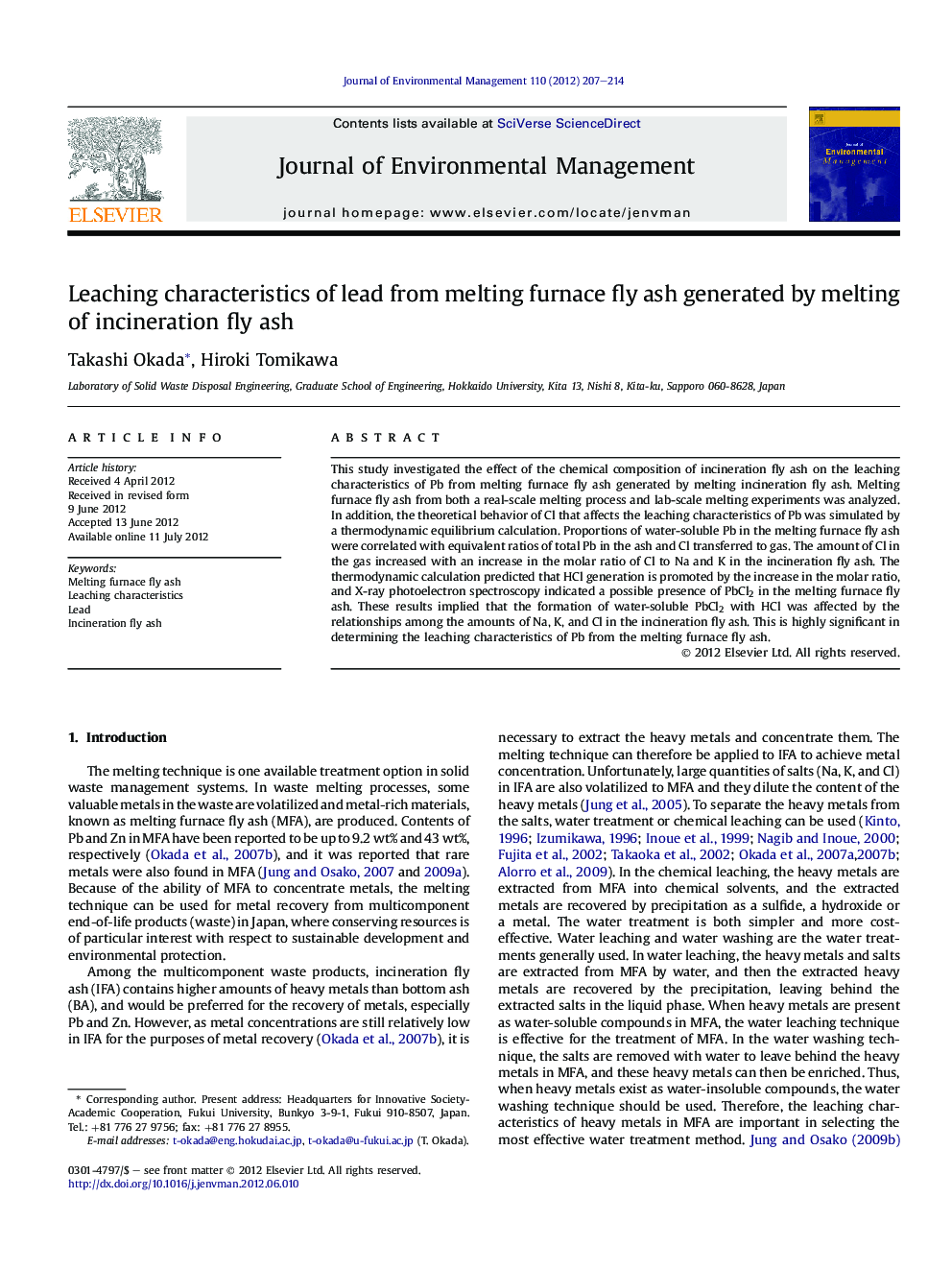| Article ID | Journal | Published Year | Pages | File Type |
|---|---|---|---|---|
| 1056521 | Journal of Environmental Management | 2012 | 8 Pages |
This study investigated the effect of the chemical composition of incineration fly ash on the leaching characteristics of Pb from melting furnace fly ash generated by melting incineration fly ash. Melting furnace fly ash from both a real-scale melting process and lab-scale melting experiments was analyzed. In addition, the theoretical behavior of Cl that affects the leaching characteristics of Pb was simulated by a thermodynamic equilibrium calculation. Proportions of water-soluble Pb in the melting furnace fly ash were correlated with equivalent ratios of total Pb in the ash and Cl transferred to gas. The amount of Cl in the gas increased with an increase in the molar ratio of Cl to Na and K in the incineration fly ash. The thermodynamic calculation predicted that HCl generation is promoted by the increase in the molar ratio, and X-ray photoelectron spectroscopy indicated a possible presence of PbCl2 in the melting furnace fly ash. These results implied that the formation of water-soluble PbCl2 with HCl was affected by the relationships among the amounts of Na, K, and Cl in the incineration fly ash. This is highly significant in determining the leaching characteristics of Pb from the melting furnace fly ash.
► We investigated leaching characteristics of Pb from fly ash generated by ash melting. ► We analyzed fly ash generated from both real-scale and lab-scale melting processes. ► The molar ratio of Cl to Na and K in feedstock affected the leaching characteristics. ► Leachability of Pb in fly ash was reduced by decreasing the molar ratio. ► Leachability of Pb in fly ash was enhanced by increasing the molar ratio.
